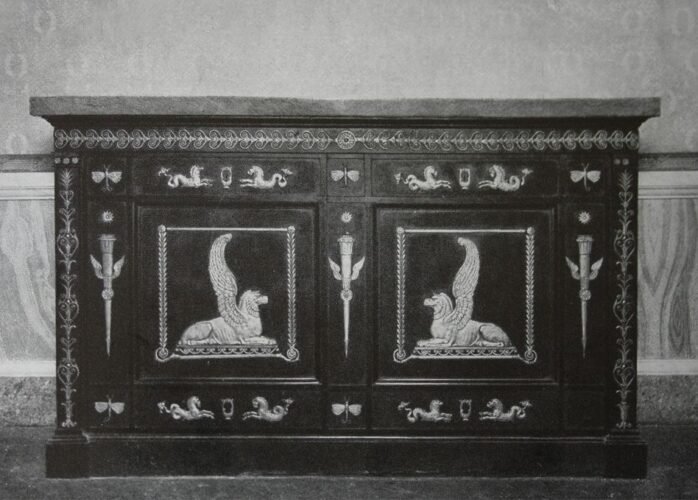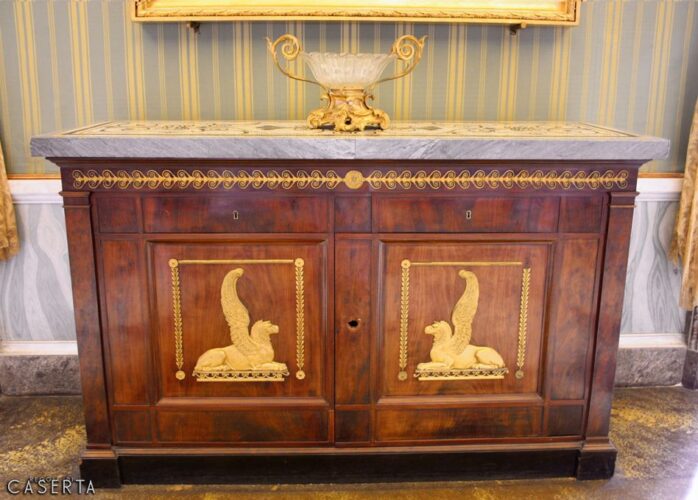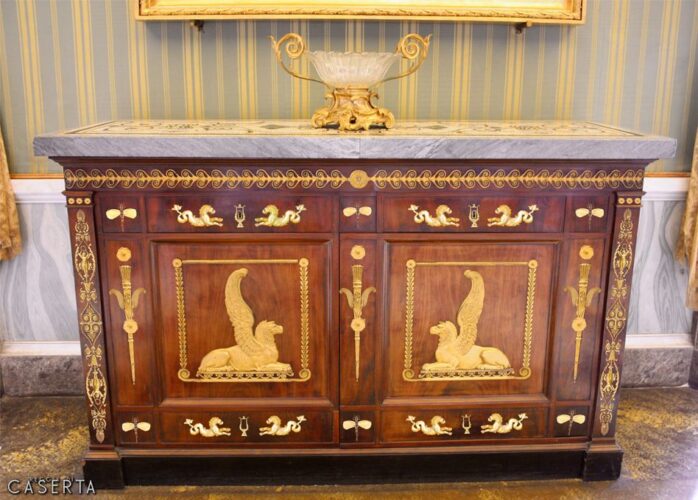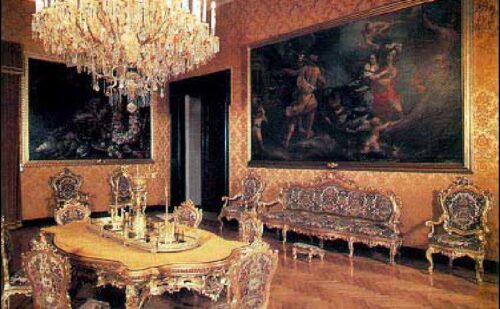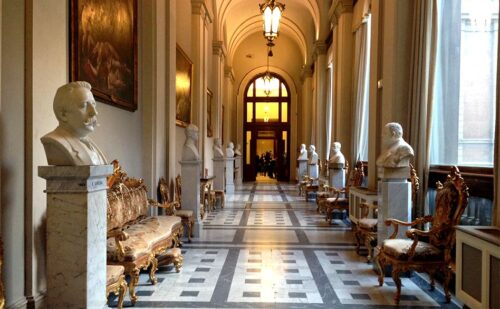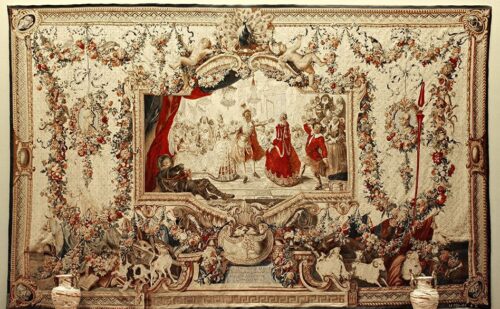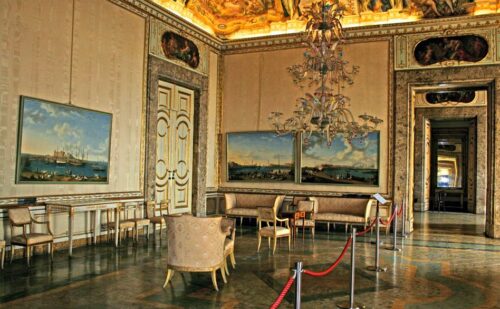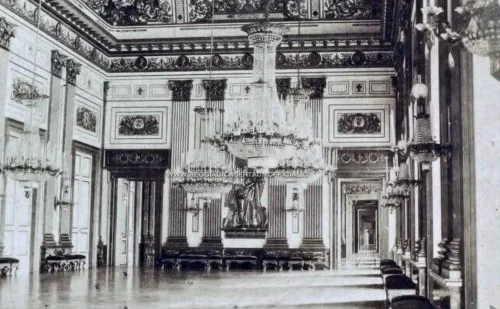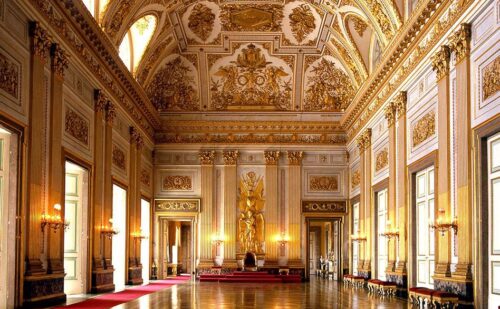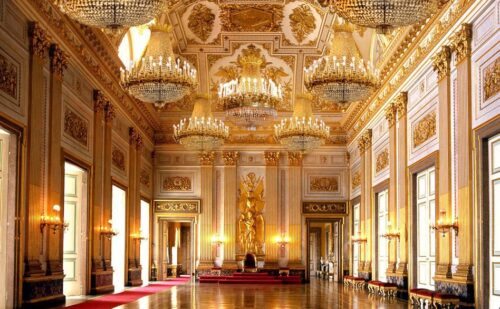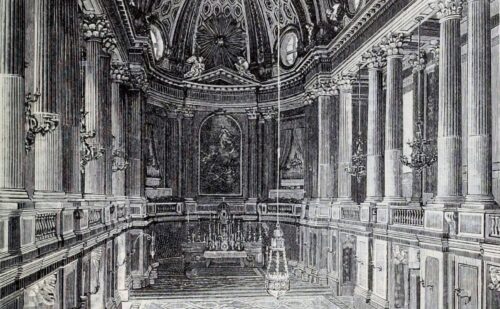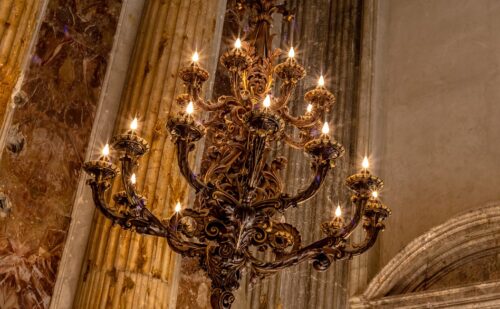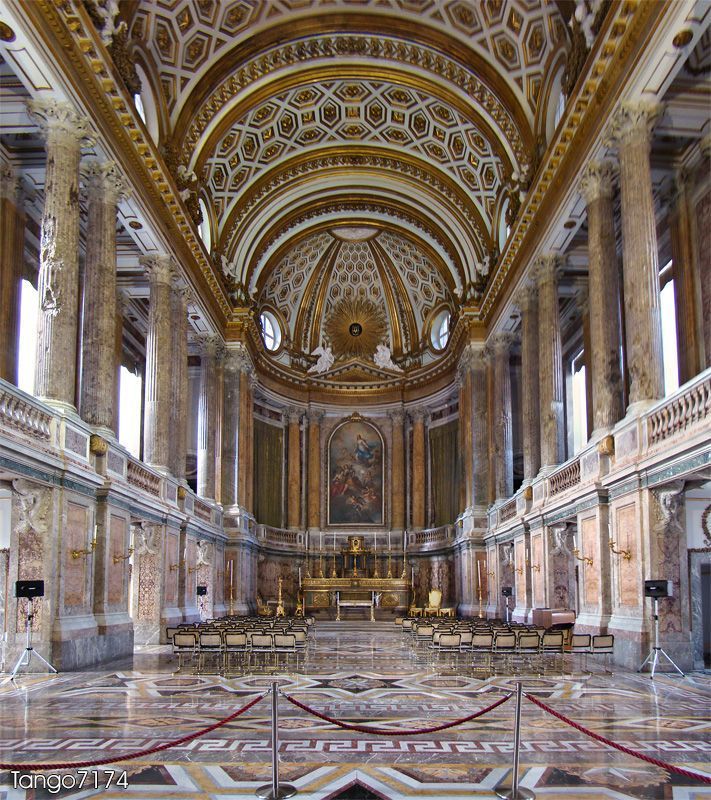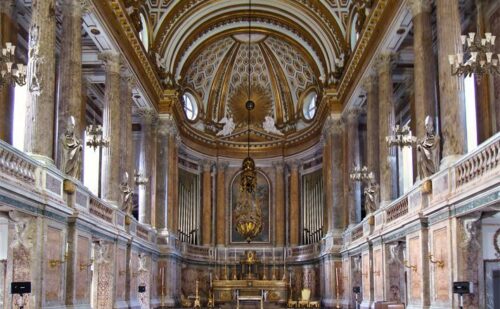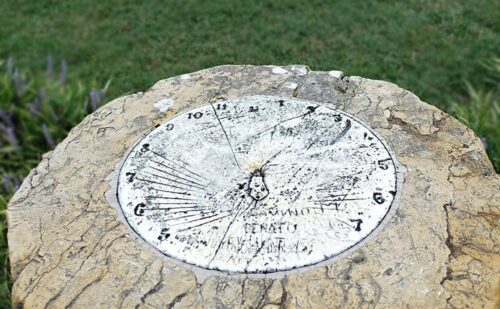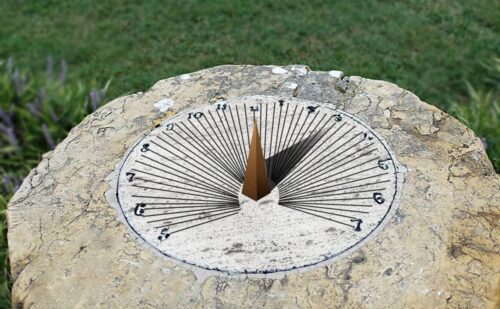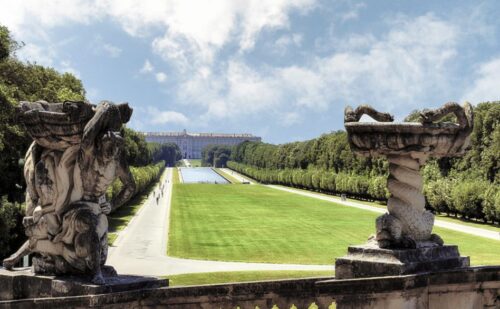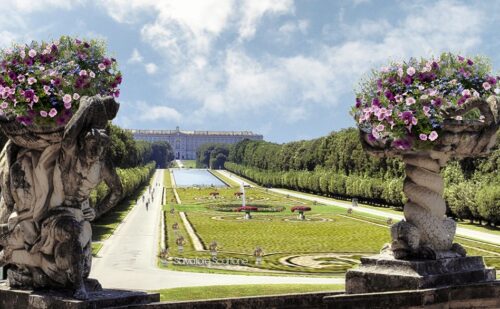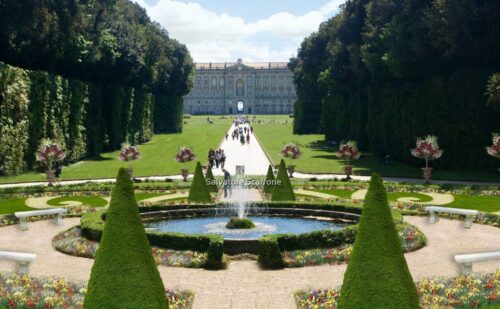Virtual restoration of the Royal Palace of Caserta
With the virtual restoration we take the Palace back in time
On this page you can observe virtual restoration with digital technique. This in order to bring the Royal Palace of Caserta back to its origins, before it was stripped following the unification of Italy, and before being damaged by the Anglo-American bombing of 1943 and during the subsequent American occupation.
Virtual restoration of furniture and objects
Restoration of a sideboard
This furniture belonged to Joachim Murat was damaged by American troops during the occupation of the Palace in1943. The photo published in 1937 proves that six years before it was intact. Note the two daisies in the bottom corners of the central square: they are not original but were added later, and probably come from another piece of furniture. The virtual restoration, although obviously not perfect, allows us to see how it looked before the damages. See also The sad story of the furnishings of Caserta
Rearrangement of the furniture
The Royal Palace of Caserta has suffered many depredations in its history. In the pictures below you can see an idea of refurnishing that shows how probably it would look until 1860, the year of the end of the Kingdom.
These rooms can be restored to their original splendor via donations, or collective purchases of the original furnishings, Neapolitan furniture and objects with the Bourbon coat-of-arms.
Dining room
To these rococo rooms belonged also the golden living room today in the Yellow Room of the Montecitorio Palace in Rome. In the second picture there is virtual restoration of the dining room of the King: note the shape of the center of the floor, and the shape of the tabletop. In the third picture you can see also a gold and white console the same as those present today in the Hall of Spring.
Antechamber of Murat
Have been added:
- Table in pietra-dura currently located in the Hall of Spring;
- XVIII century Aubusson carpet (not located in the Palace);
- XVIII century Capodimonte vase with flowers (not located in the Palace);
- Empire style vase (from the Royal Palace of Naples).
Tapestries
As demonstrated by the Historical Archives, many objects are missing from the Palace, including numerous tapestries, some of which made by the Gobelins manufactory (some for Louis XV of France) and others made in Naples at the Royal Manufactory. These tapestries today some are located at the Reggia di Capodimonte in Naples, while the majority are at the Quirinale Palace in Rome, precisely in the “Hall of cuirassiers”, in the “First boardroom” and “Napoleonic sitting “. They were taken during the Kingdom of Italy (1861-1946).
Virtual reconstruction
Throne room
The Throne Room with the ten Empire style chandeliers. These chandeliers were removed during the Kingdom of Italy (1861-1946), but Ettore Martucci, in his book “Caserta: Royal City” published in 1928 already declared them missing, but with a mistake: he reported the presence of six chandeliers, but the hooks in the ceiling proves that they were ten.
In this vintage photo you can see the missing chandeliers, and already at the time a part of them had been taken away
The Palatine Chapel
The Palatine Chapel was bombed during the WWII by the Americans damaging the ceiling, columns and walls, destroying priceless works such as vestments, the two bodies set high on the sides of the altar (where now you see tents), seven of the eight paintings in the chapel and most of the chandeliers. The central chandelier stands today in the Royal Apartments in the Chapel of Pius IX.
In this film shot a year before the bombing, you can still see everything that was destroyed.
The sundial of the Margherita Fountain
The sundial of the Fontana Margherita has been damaged by time and vandals.
Park completion projects
The possibility of receiving funding and donations would allow both to restore the Reggia and the Park to their original splendor, but also to complete both as per the original project which, due to a lack of funds, was never completed.
Completion of the parterres in the Waterway
Carlo Vanvitelli completed the Royal Palace and the Park after the death of his father Luigi. To cut time and construction costs, he was forced to reduce the size of the park, and the number of fountains. Where now you see the big green lawn, there should have been a further fountain.
- To restore the whole design of the so-called “waterway”, but without having to make structural changes, as you can see in the image, two large flowering half with blue flowers recall the color of water. A border with flower pots will give movement as in the original parterre by Vanvitelli;
- The waterway can be completed with the flower parterre and flower vases as desired by the Architect.
Completion of the Margherita Fountain
The Margherita Fountain completed according to the classical stylistic features of the flowered parterre.
External link
